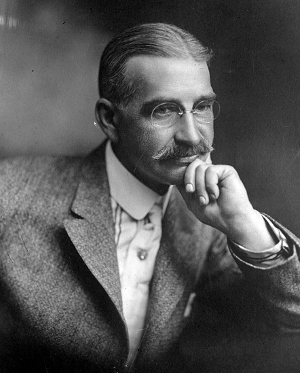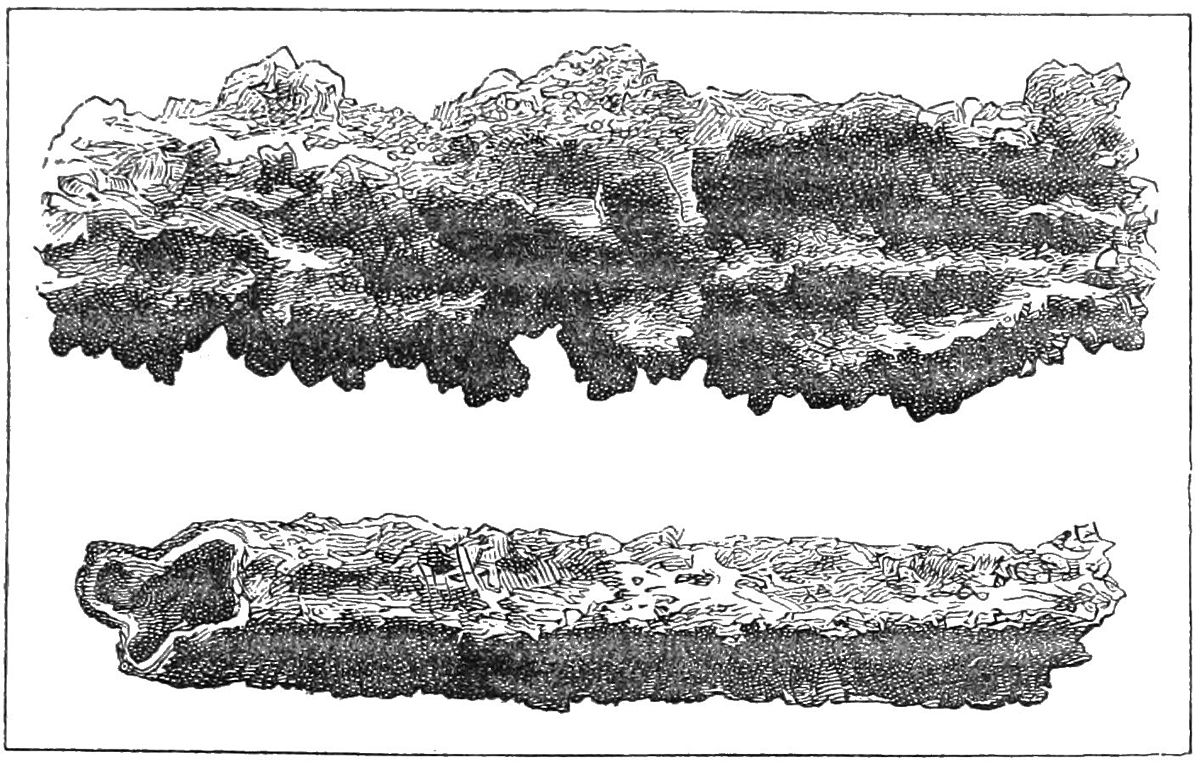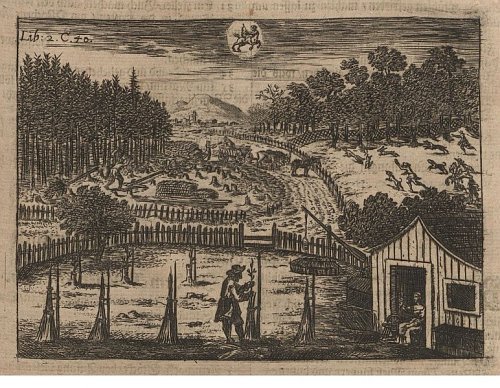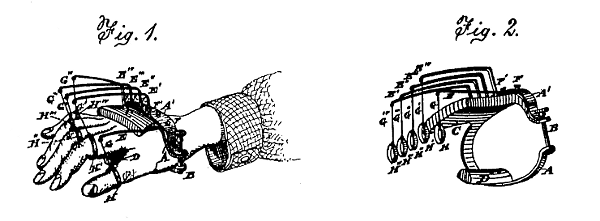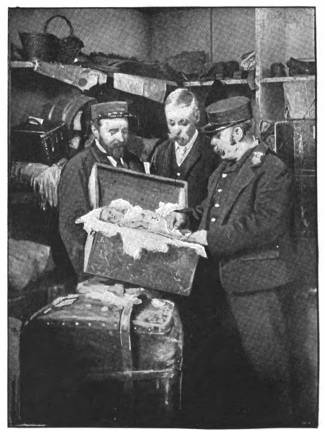
It is a sad fact that dead babies figure largely in the contents of the railway Lost Property Offices. These are at once handed over to the police, and a formal inquest is held. Some little time ago, Mr. Groom tells me, a live child was found in a small box on the departure platform, close to the eight o’clock Scotch train. The little one was cosily packed in wadding, and was provided with a feeding-bottle. A few holes had been drilled in the box–which, by the way, was covered with wallpaper, and was addressed to a home in Kilburn. The authorities of this home, however, refused to take in the child, as no money had been sent with it. So the poor, lost property infant was handed over to the police, who, in turn, passed it on to the workhouse, where it was christened ‘Willie Euston,’ and lived for four years. I succeeded in obtaining a photograph of the finding of this child, and the incident is shown in the accompanying illustration. The official on the right gave his own Christian name to the poor little waif.
— William G. FitzGerald, “The Lost Property Office,” Strand, December 1895

